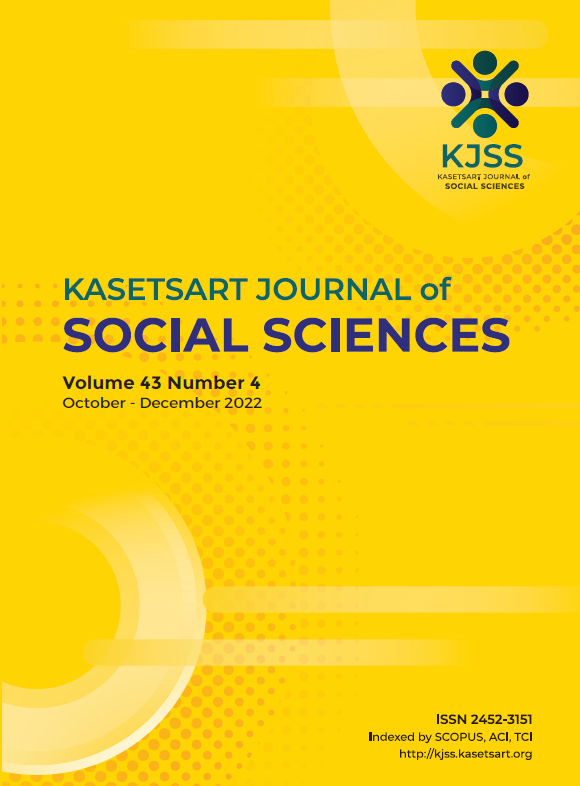Health-and-safety-promotion program development for children with intellectual disabilities in inclusive classroom
Keywords:
health and safety, inclusive classrooms, intellectual disabilitiesAbstract
This research aimed to develop a health-and-safety- promotion program for children with intellectual disabilities in inclusive classrooms. These included processes focused on creating, experimenting with, and improving existing programs. The target group consisted of 8 experts, 2 teachers, one in special education and one in health education, and 6 children with intellectual disabilities who voluntarily participated in the experiment. Children with mild intellectual disabilities are defined as those with an intelligence quotient (IQ) of 50–69 and 8–10 Years Old. The research instruments included a draft program on health and safety promotion for children with intellectual disabilities, recordings of interviews, and health-and-safety promotion program for children with intellectual disabilities in inclusive classrooms, and questionnaires. Data analysis employed content analysis. The statistics used were mean (μ), standard deviation (σ), program efficacy (E1/E2), effectiveness index (EI), and content analysis. Our research findings showed program components – namely: (1) objectives; (2) features; (3) the selection of participants; (4) organization of co-teaching activities for station teaching; (5) IEP plans; (6) learningmanagement plans by adapting the curriculum to the current situation. Therefore, in this program, children learnt about Protecting themselves from COVID-19, PM 2.5, crossing a crosswalk, wearing a helmet, etc. and visual media; (7) assessment; (8) competency assessment; and (9) the program manual. The efficiency of this program received a score of 80/80, which is in line with the criteria. The effectiveness (EI) value was 0.69. The teachers involved stated that the children possessed better learning retention.
Downloads
Published
How to Cite
Issue
Section
License

This work is licensed under a Creative Commons Attribution-NonCommercial-NoDerivatives 4.0 International License.
This is an open access article under the CC BY-NC-ND license http://creativecommons.org/licenses/by-nc-nd/4.0/










